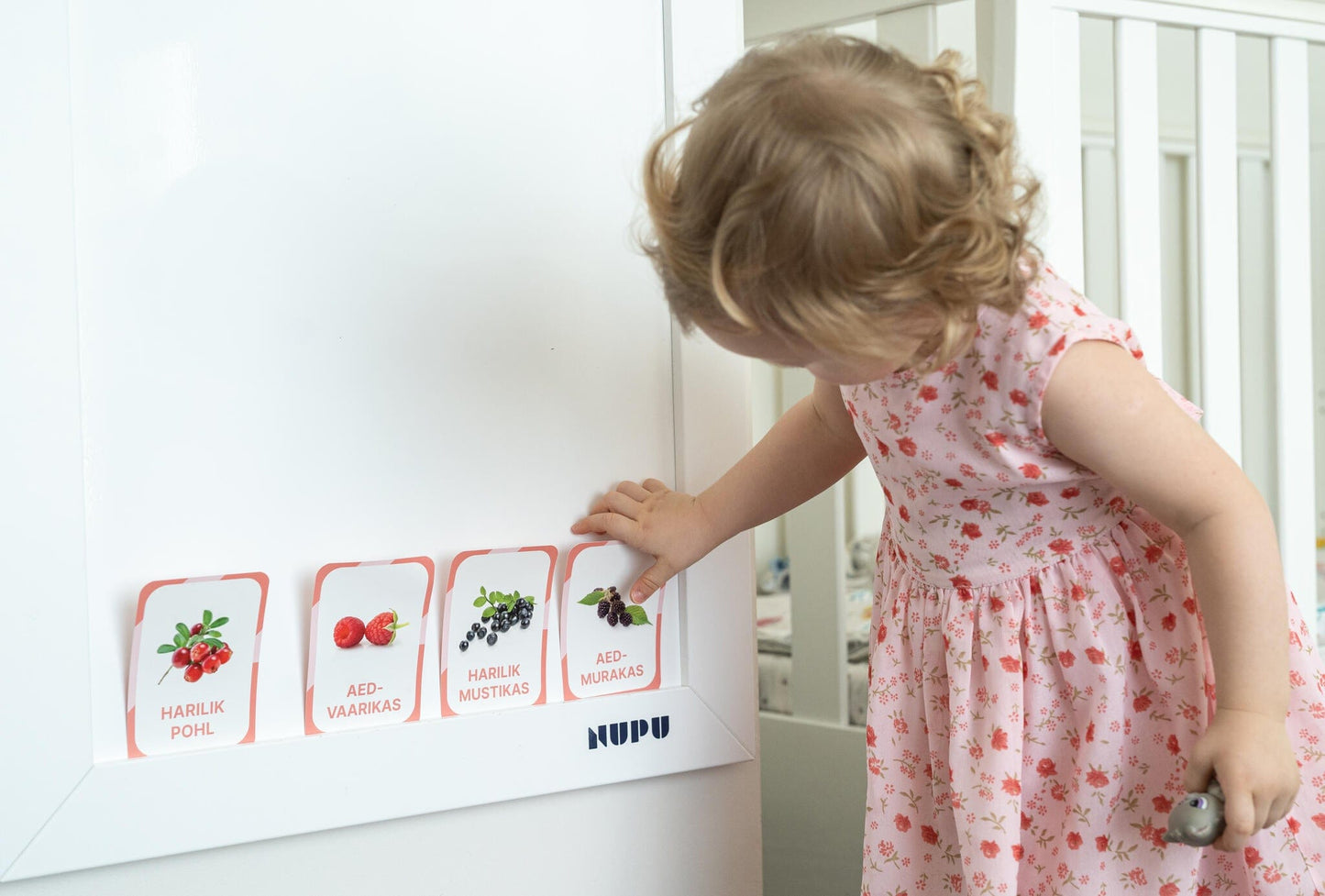NUPU
Study cards Estonian berries and fruits
Study cards Estonian berries and fruits
Study cards for learning about the berries and fruits that grow in Estonia. On the front of the cards is a picture of the fruit with the name. On the back there is information about the plant and its fruit.
Included in the set
25 berry and fruit study cards (apple, pear, plum, sour cherry, garden raspberry, garden strawberry, gooseberry, red currant, black currant, white currant, common blueberry, common pomace, cranberry, bog blackberry, field blackberry, sea buckthorn, garden blackberry, wild strawberry, wild rose hips, black chokeberry, mountain ash, quince, creeper, grape, cloudberry)
Developed and produced in Estonia.
The game "Collect cards"
On the back of the cards, interesting facts about each animal are presented, including numerical indicators such as length, weight, lifespan, number of cubs and length of pregnancy. You can play a great game with these numbers so that the information becomes clear even faster.
Age: 4+
Number of players: 2-6
Gameplay:
1. All cards are dealt equally between the players. If the cards are not dealt equally, the remaining cards are randomly discarded.
2. The youngest player starts. The game goes clockwise. The starting player chooses one card, which is not shown to others for the time being, and says one numerical characteristic on the back - height, weight, life span, duration of pregnancy or number of cubs. The numerical value of the characteristic is initially left unsaid. Then the other players also choose one card from their hand. All players go to the center of the card at the same time, and the player whose card had the said characteristic with the highest value gets all the cards. The cards are placed in front of the player and cannot be used again in other rounds.
* For number ranges, the largest number is considered. The length does not include the length of the tail.
* In case the highest number is repeated on the cards of different players, the cards are divided equally between these players. If the cards are not divided equally, the remaining cards are left out of the game.
3. Then it is the turn of the next player, who chooses one card and a characteristic on the basis of which the cards will be compared.
4. The game continues until all players have run out of cards. Whoever has the most cards on the table at the end of the game wins.










